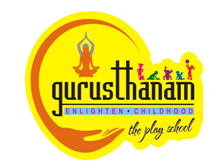Guidance Policy
The Playschool guidance policy is based on the belief that discipline is part of teaching. Our guidance policy considers children’s ages, individual temperaments and levels of development. The staff of the nursery provides respectful care, treating each child as an individual, but also being mindful that the children are participating in a group situation. Staff interactions with children are to help them to develop positive self-images as well as learning to help others.
Emphasis is on positive behaviors. Most effective communication with children occurs at their eye level and in face to face situations. Our classroom environment is designed in ways that let the children know what behavior is expected. Active areas are for active play and quiet areas are for quiet play. Labeling of shelves shows children where to return materials when they are finished with them.
Three consistent limits in our classrooms are:
1. Children may not hurt themselves
2. Children may not hurt others
3. Children may not destroy property
Children are provided with a consistent routine, a predictable environment, and clear limits of appropriate behavior. Simple, consistent limits are communicated to the children through both the words and actions of the teachers. These limits are based on realistic expectations for children’s behavior in light of their developmental levels. When children are having difficulty behaving within these limits, one of the following techniques may be used. Choice of technique depends on the child as well as the specific situation.
Positive Reinforcement
Teachers use this technique to communicate to children that their behavior is okay, and is meeting expectations. For example, a teacher might comment to children putting toys away at clean up time, “I like the way you are cleaning up the toys.”
Redirection & Choice
Children who are behaving inappropriately may be asked to tell the teacher what the rule is. Teachers may make polite requests to have children examine their behavior to see if it fits with what the rule is. The children can then verbalize to the teacher what appropriate behavior is for the situation. Child may be asked to choose a different activity if they can’t follow rules for the activity they are doing.
Problem Solving
When children are having difficulty in a situation, a teacher’s intervention might be to talk with the children and have them help come up with a solution to the problem. This technique involves the teacher and children listening to what is being communicated and together developing a plan for how to resolve the conflict or difficulty. This technique may be used with individual children or with groups of children.
Consequences
Children are taught that behavior has consequences, either natural or logical. Consistent use of consequences helps children to develop understanding about their behaviors and feel more in control of self. Talking with children about these consequences is also part of staff interactions with the children.
Time to Reflect
Occasionally it may be necessary to have a child move apart from the group in order to regain control of self. The child may be encouraged by the staff to “sit apart” from the group or choose an individual Activity when his/her behavior is indicating a need to be away from the group in order to prevent hurting self or others. Time to reflect is not used to isolate and/or punish children. It is used as a tool child and/or teachers can select when time is needed for regaining self-control. Teachers will debrief with children when the child indicates readiness to rejoin the group.

